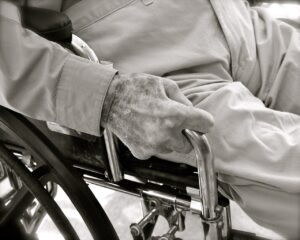Table of Contents
ToggleProviding Back Care and Massage:
Providing back care and massage is an essential aspect of patient care that promotes relaxation, relieves tension, and enhances overall well-being.

Purpose:
- Enhance Circulation and Provide General Relief:
- Stimulate blood circulation and offer overall relief to the patient through the massage.
- Prevent Bedsores:
- Implement massage techniques to reduce the risk of bedsores, particularly in immobile or bedridden patients.
- Provide Comfort to the Patient:
- Offer a soothing and comforting experience to enhance the patient’s overall well-being.
Equipment Needed:
- Alcohol 25%:
- Utilize alcohol for cleaning purposes or as part of massage preparation.
- Talcum Powder:
- Incorporate talcum powder for its soothing and friction-reducing properties during the massage.
- Bath Towel:
- Use a bath towel for cleaning, maintaining hygiene, and ensuring patient comfort.
By combining these elements, the healthcare provider aims to stimulate circulation, prevent bedsores, and enhance the patient’s overall comfort and well-being during the massage session.
Here are guidelines for effectively providing back care and massage:
1. Assess the Patient:
- Before initiating back care or massage, assess the patient’s medical history, any existing back conditions, and obtain consent.
2. Ensure Privacy:
- Create a private and comfortable environment to respect the patient’s dignity and ensure relaxation during the procedure.
3. Gather Supplies:
- Collect the necessary supplies, including massage oil or lotion, clean towels, and any additional support equipment like pillows.
4. Communicate with the Patient:
- Explain the procedure to the patient, ensuring they understand and feel comfortable. Inquire about any specific preferences or concerns.
5. Positioning:
- Ask the patient to lie face down on a comfortable surface, ensuring proper alignment of the spine. Provide additional support with pillows if needed.
6. Warm-Up:
- Begin with a gentle warm-up to relax the muscles. Use broad strokes and light pressure to gradually prepare the back for more focused massage.
7. Massage Techniques:
- Employ various massage techniques, such as effleurage, petrissage, and kneading, to address specific areas of tension. Adjust pressure based on the patient’s comfort level.
8. Focus on Problem Areas:
- Pay attention to any areas of tension or discomfort identified by the patient. Use targeted techniques to address knots or tight muscles.
9. Incorporate Stretching:
- Integrate gentle stretching movements to enhance flexibility and alleviate stiffness. Ensure that stretches are within the patient’s comfort range.
10. Maintain Communication:
- Throughout the massage, maintain open communication with the patient. Encourage them to express preferences regarding pressure and areas of focus.
11. Pay Attention to Body Language:
- Observe the patient’s body language for signs of discomfort or relaxation. Adjust your approach accordingly.
12. Address Sensitive Areas:
- Be mindful of sensitive areas, such as the spine or bony prominences, and use gentler techniques in these regions.
13. End with Relaxation Techniques:
- Conclude the massage with calming and soothing techniques, gradually reducing pressure to promote relaxation.
14. Provide Post-Massage Care:
- Offer the patient a moment to rest and gradually sit up after the massage. Provide water to stay hydrated.
15. Document the Session:
- Document the massage session, including the techniques used, the patient’s responses, and any identified issues for future reference.
16. Follow Up:
- Inquire about the patient’s experience and well-being after the massage. Address any concerns or questions they may have.
By following these guidelines, healthcare providers can ensure a safe, effective, and therapeutic back care and massage experience for patients, contributing to their overall comfort and well-being.
Read more: BSc/RN/PHN/RM Practical Questions
Read more: Organic Hair Care

